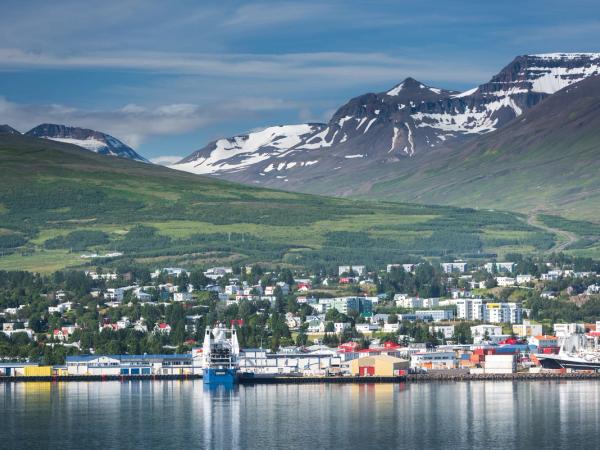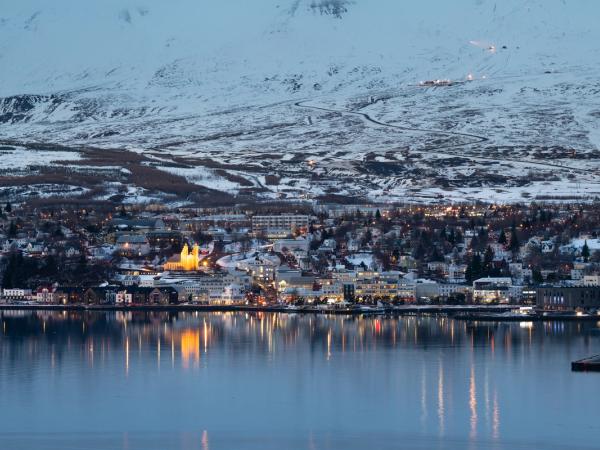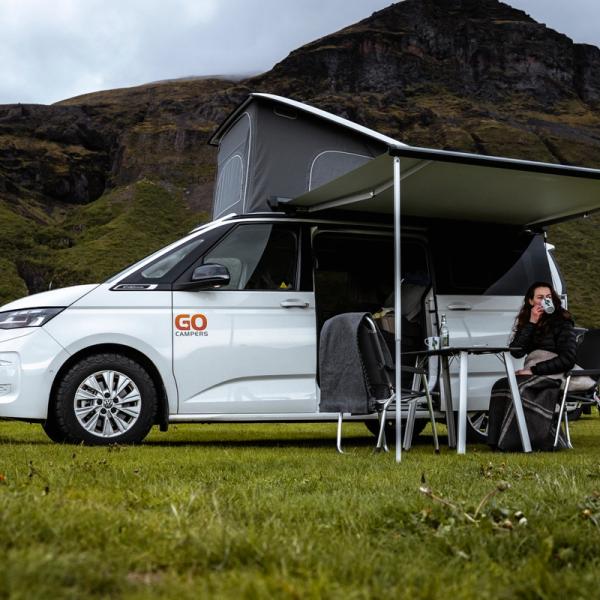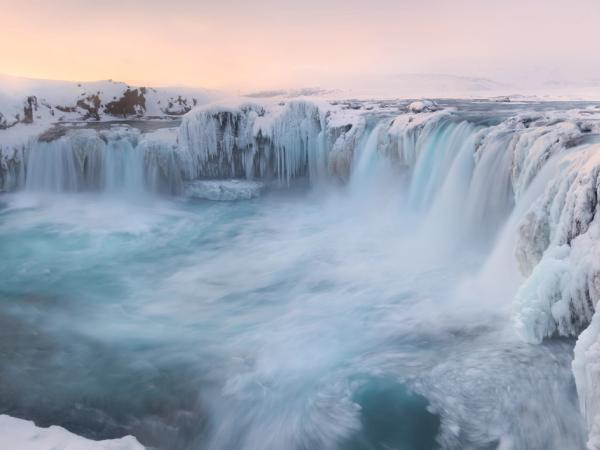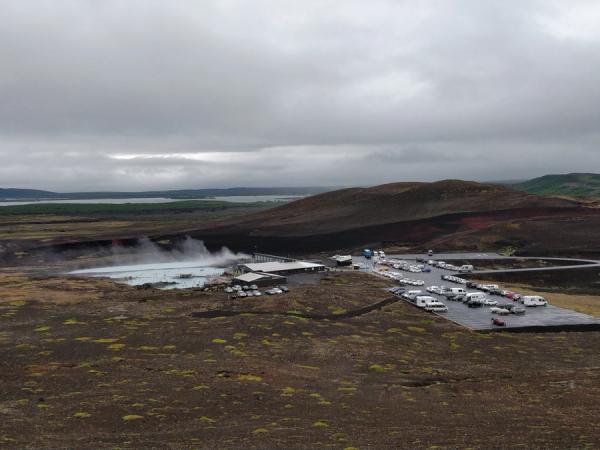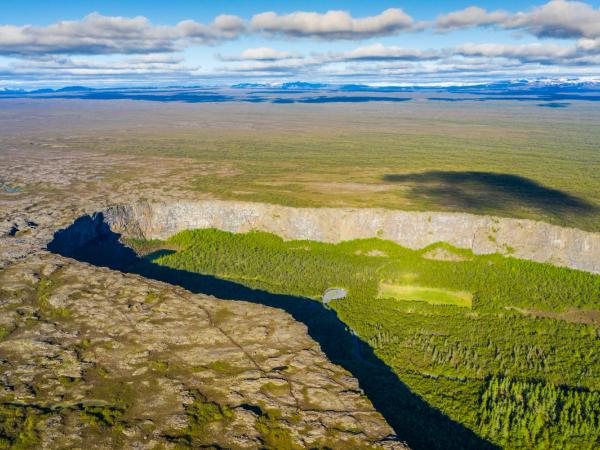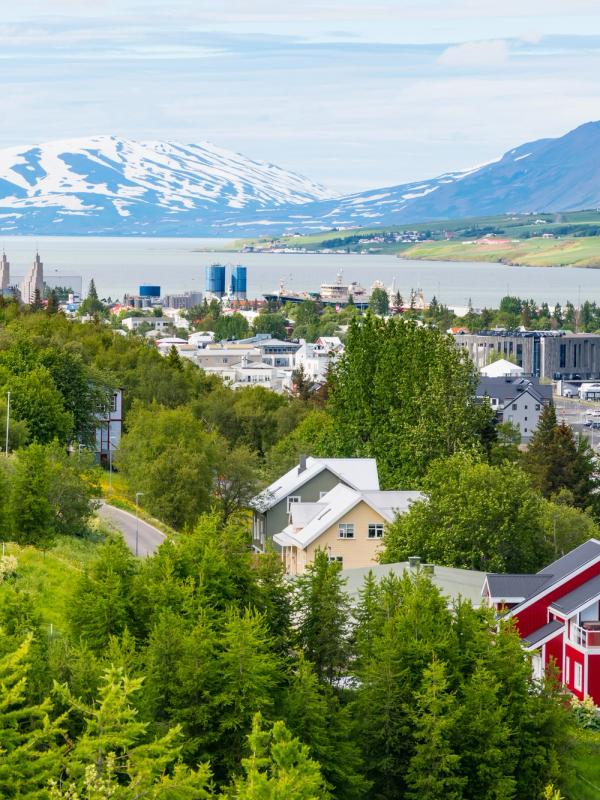
Ultimate Guide to Akureyri: Sights, Food & Day Trips
Akureyri, often called the “Capital of the North,” is Iceland’s second city – though it feels more like a relaxed town with a fjord at its front door and mountains rising behind. After long stretches of driving through wild landscapes and tiny villages, arriving here feels like a welcome pause: cafés buzz with life, geothermal pools invite a soak, and the streets are easy to explore on foot. Compact and friendly, Akureyri makes an excellent base for a few days, with dramatic volcanic landscapes, waterfalls, and charming fishing villages all within reach.
Akureyri at a Glance
- Population: ~20,050 (2025) W
- Location: At the head of Eyjafjörður, North Iceland
- Airports: Akureyri (AEY) domestic/seasonal international; Keflavík (KEF) for most international flights.
- Time Zone: GMT year-round (no daylight saving).
- Currency: Icelandic króna (ISK).
- Dialing Code: +354.
- Why go: Northern lights in winter, midnight sun hikes in summer, whale watching, hot pools, and easy access to the Diamond Circle.
When to Visit Akureyri
Late spring and early autumn offer the best balance of stable weather, lighter crowds, and lower prices than peak summer. You’ll still get long days for road-tripping and hiking, plus a real chance of seeing the northern lights from September onward. Summer is reliably lively and outdoorsy; winter brings snow, skiing, and those crisp, clear nights that make aurora hunting addictive. If you’re in a campervan, shoulder season also means easier parking and more relaxed campsites without sacrificing access to the region’s highlights.
Summer (June–August): Long days & outdoor life
Summer is when Akureyri shines. Think late sunsets, near-round-the-clock brightness, and café terraces buzzing until midnight. Trails above town – like Mount Súlur and Glerárdalur – are snow-free and inviting, whale-watching boats run frequently on Eyjafjörður, and day trips to Mývatn, Goðafoss, and Tröllaskagi are straightforward. Expect the warmest temps of the year, but bring layers: mountain weather can flip fast. It’s peak season, so restaurants and activities book up – reserve ahead for popular tours and hot pools like Forest Lagoon. Campervan tip: use the long evenings to drive scenic fjord roads when they’re quiet, then roll into a campground late with plenty of light to set up.
Spring & Autumn (Apr–May, Sep–Oct): Shoulder-season sweet spot
If you want calmer trails and easier reservations, target the shoulders. In April–May, snow retreats from the lower paths, waterfalls run strong, and crowds are minimal. September–October brings autumn color to the hillsides and crisp, clear nights that are ideal for northern lights. Most tours still run, but hours can be shorter, so check schedules in advance. Prices and parking are friendlier than midsummer, and you’ll have more elbow room at museums, pools, and cafés. Campervan tip: daylight is generous but not endless – plan a tighter loop each day, and build in a hot pool stop to warm up after breezy fjord walks.
What is Akureyri in Winter Like? Snow, Skiing & Aurora (Nov–March)
Winter transforms Akureyri into a compact, Nordic-feeling base for snow days and starry nights. Expect short daylight, fresh snow in town, and excellent chances of aurora on clear evenings – drive a few minutes out along the fjord for darker skies. Hlíðarfjall ski area sits right above the city with panoramic runs when conditions line up, while Forest Lagoon and the Akureyri Swimming Pool are perfect for thawing out after. Do pack for winter driving: storms can close passes and slow travel, so check forecasts daily and keep plans flexible. Campervan tip: book powered sites, carry extra water, and schedule one “city day” for museums, cafés, and a long geothermal soak when the weather moves in.
Getting There & Around
Most travelers arrive in Akureyri by road, as the town sits right on Iceland’s Ring Road. If you’re driving counterclockwise, Akureyri often comes toward the end of the journey, after East Iceland and the fjords. From this direction, the ring road passes through the Vaðlaheiðargöng tunnel, just east of town. It’s the only toll road in Iceland: cameras record your plate and you pay online within 24 hours (around 1,650 ISK / $12 USD for a campervan). If you’d rather skip the fee, the old mountain pass is only 20 minutes longer and offers wide views over Eyjafjörður, but it can be snowy or icy outside the warmest months.
If you’re traveling clockwise around the ring road, Akureyri comes relatively early in the journey – only about 5 hours from Reykjavik, with only a few natural stops along the way.
Akureyri also has a small airport (AEY) with domestic flights from Reykjavik and occasional international connections in summer. It’s worth considering if you’re short on time but still want a taste of North Iceland.
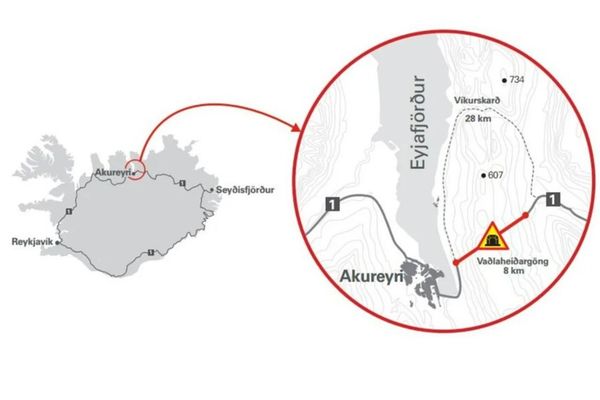
Getting Around Town
Akureyri is compact, walkable, and easy to navigate. Most sights, cafés, and museums cluster around the harbor and hillside, meaning you can cover a lot in a short stroll.
Driving & Parking
Driving in town is straightforward, with wide streets and clear signage. Parking downtown is metered in marked zones, with pay-and-display machines available. However, it’s far easier to simply pay using the apps: EasyPark and Parka both cover the parking areas in Akureyri.
Free parking can be found a little further out, and most guesthouses and the campsite offer dedicated spaces.
Buses in Akureyri
Local buses are free to use and connect the main neighbourhoods with downtown. They’re clean, punctual, and useful if you don’t want to drive from the campsite into town or if you’re staying somewhere a bit further out than the city center.
Walking & Cycling
Akureyri is small enough that you’ll be absolutely fine exploring on foot. Waterfront paths link the harbor with the botanical garden and residential districts, while bike lanes run along some of the fjord side roads.
What to See & Do in Akureyri
Akureyri might be small, but it packs in a surprising number of sights, cultural spaces, and natural escapes. From downtown strolls to fjord cruises, here are the highlights you shouldn’t miss.
Landmarks & City Strolls
Akureyrarkirkja
Akureyri’s most iconic landmark is its church, designed by Guðjón Samúelsson (the architect behind Reykjavik’s Hallgrímskirkja). Consecrated in 1940, its dramatic facade was inspired by basalt columns. Climb the wide steps to the entrance for sweeping views of the fjord and town, which is the classic Akureyri photo stop. Inside, note the striking stained glass and ship-shaped pulpit.
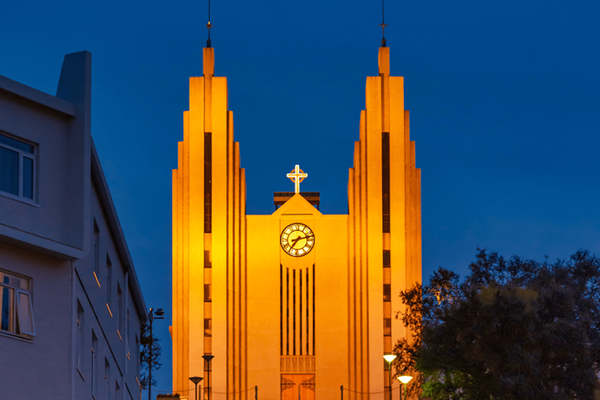
Old Town (Gamli bærinn) & Harbor
The oldest houses in town line Aðalstræti, painted in cheerful colors and framed by the hillside. This is Akureyri’s historic heart, perfect for a relaxed wander. Continue north to Hafnarstræti, the main street lined with cafés, restaurants, and small shops. Down by the harbor, working boats share space with whale-watching tours and scenic fjord views.
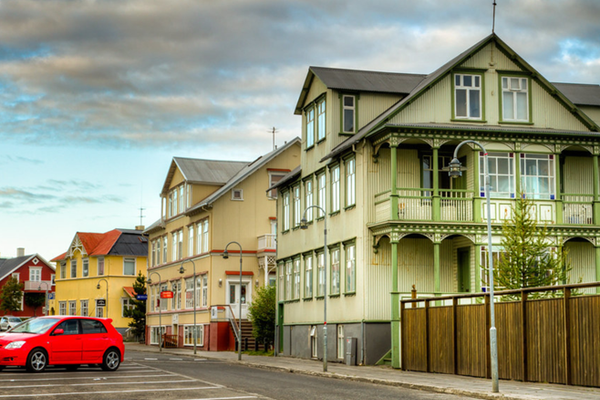
Hof Cultural and Conference Center
Also down by the waterfront, the Hof concert house is Akureyri’s hub for live music, theatre, and cultural events. Opened in 2010, its rounded, wood-and-glass design echoes the fjord and surrounding mountains, making it one of the city’s most striking modern buildings. Even if you don’t attend a show, it’s worth stopping inside for the café, exhibitions, and views across the harbor.
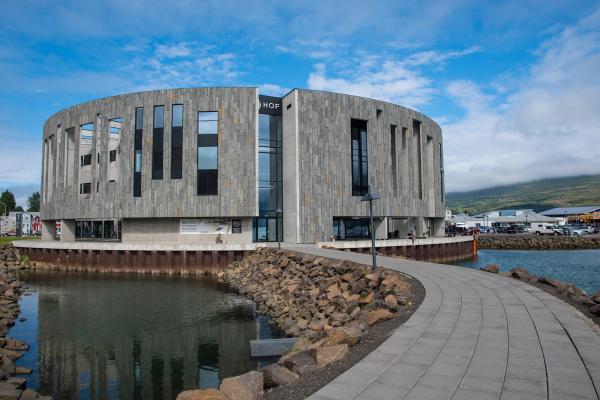
Museums & Culture in Akureyri
Akureyri’s museum scene is small but diverse, ranging from fine art to quirky collections that celebrate Iceland’s love of travel and machinery. They’re spread across town and the surrounding area.
Akureyri Art Museum
Set in a former dairy building on Kaupvangsstræti, this contemporary gallery hosts rotating exhibitions of Icelandic and international artists.
Akureyri Museum & Laufás Heritage Site
The Akureyri Museum, on Aðalstræti, dives into the town’s history through exhibitions on daily life, fashion, and folklore. Admission also covers Laufás, a beautifully preserved turf-house farmstead 20 minutes north of town, complete with period furnishings and a small church.
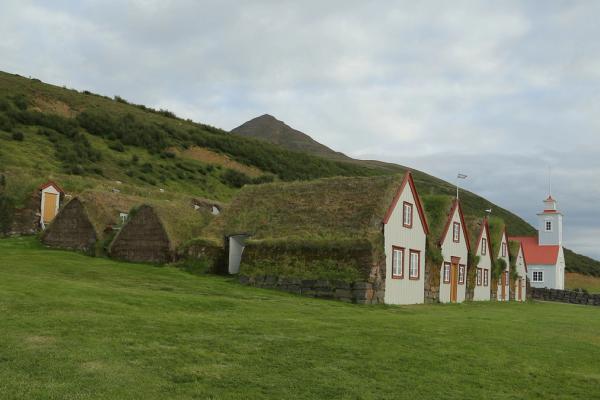
Aviation Museum (Flugsafn Íslands)
Located at Akureyri Airport, this museum celebrates Iceland’s aviation history with restored planes, engines, and interactive displays. You’ll see aircraft ranging from vintage prop planes to modern jets, plus stories about how aviation shaped Iceland’s remote communities.
Motorcycle Museum of Iceland
Just south of the town center, this museum chronicles a century of Icelandic motorbike culture. Alongside classic bikes – from vintage Harley-Davidsons to Czech Jawas – you’ll find memorabilia, racing stories, and the tale of Pétur J. Kristjánsson, one of Iceland’s motorcycle pioneers.
Industrial & Toy Museums
Next to the Motorcycle Museum is where you’ll find the Industry Museum, which preserves tools, machinery, and everyday objects from the region’s working past. Nearby, the Toy Museum (part of the Akureyri Museum complex) is a nostalgic collection of dolls, model trains, and playthings that’s fun for families.
Into the Quirky & Niche
Akureyri also has smaller, offbeat collections. The Nonni House celebrates Jón Sveinsson, the beloved Icelandic children’s author. The Akureyri Natural History Museum introduces Iceland’s flora and fauna, including mounted birds and geological displays, which provide context before exploring North Iceland’s wild landscapes.
Gardens & Nature Inside the City
Akureyri isn’t a big city in international standards; you don’t have to go far to find green spaces, quiet corners, or absolute countryside. Parks, forests, and riverside trails thread through town, making it easy to swap city streets for nature in just a few minutes
Akureyri Botanical Garden (Lystigarðurinn)
Founded in 1912, this is the world’s northernmost botanical garden, with over 7,000 plant species, including hardy Arctic blooms. In summer, paths wind through a riot of color, while a small café serves coffee and cakes. It’s free to enter, and a peaceful place to break up a busy day of driving.
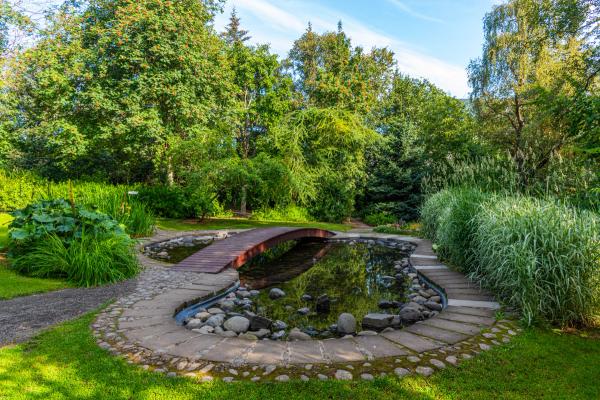
Glerá River Trails & Kjarnaskógur Forest
The Glerá river valley offers wild-feeling paths just steps from downtown. Follow the trails upstream into a quiet gorge, with mountains rising on both sides. South of town, Kjarnaskógur is a forested recreation area popular with locals. It has hiking and biking loops, picnic areas, and it’s also home to the town campsite, meaning that even if you’re staying in a campervan in Akureyri, it doesn’t feel like you’re in a city at all.
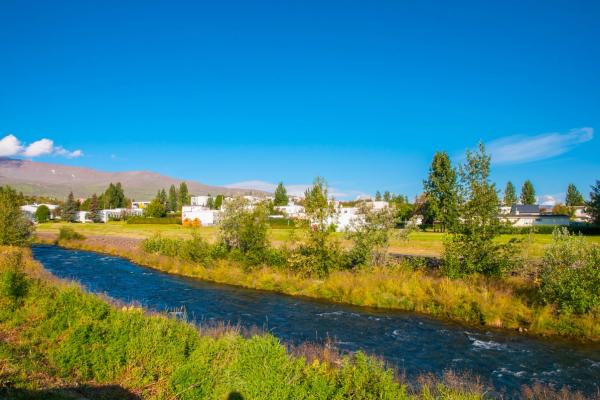
Hot Springs & Swimming Pools
Forest Lagoon
Akureyri’s newest attraction is this luxurious geothermal lagoon across the fjord in Vaðlaskógur forest. Open since 2022, it features a large infinity-style pool with two swim-up bars, a smaller hot pool kept at a cozy 40°C, a sauna with panoramic views, and a chilly plunge pool. It’s an easy 5-minute drive from downtown and stays open until late – perfect for an evening soak after a day trip.
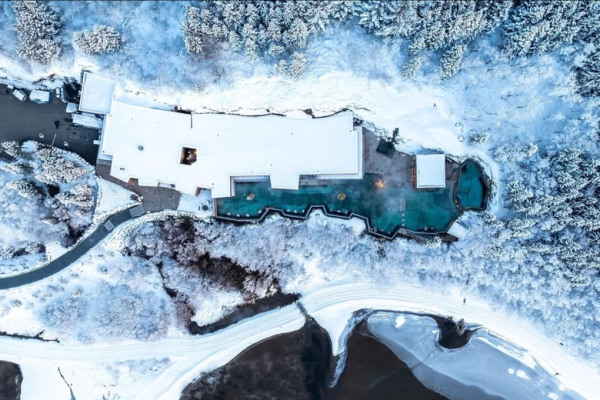
Akureyri Swimming Pool
One of the best public pools in Iceland, the Akureyri Swimming Pool has outdoor lanes, hot tubs, slides, steam rooms, and cold plunge pools. It’s family-friendly, affordable, and open year-round – ideal for warming up after a snowy walk in winter or cooling off on long summer evenings.
Foss – The Waterfall Hot Spring
This unique hot spring was discovered during the digging of the Vaðlaheiðargöng tunnel. Today, the geothermal water flows down the mountainside in a steaming stream before tumbling into the fjord below. Just above the waterfall, a small pool has formed – a rustic soak spot with wide-open views across Akureyri and Eyjafjörður.
Classic Akureyri Experiences
Whale Watching in Eyjafjörður
Akureyri sits on Iceland’s longest fjord, a deep-water habitat for humpbacks, minkes, porpoises, and dolphins. Whale-watching tours depart directly from the harbor, usually lasting 2–3 hours. The season peaks in summer, but sightings are possible well into autumn. For smaller groups and fishing-village charm, head north to Dalvík for tours with a more local feel.
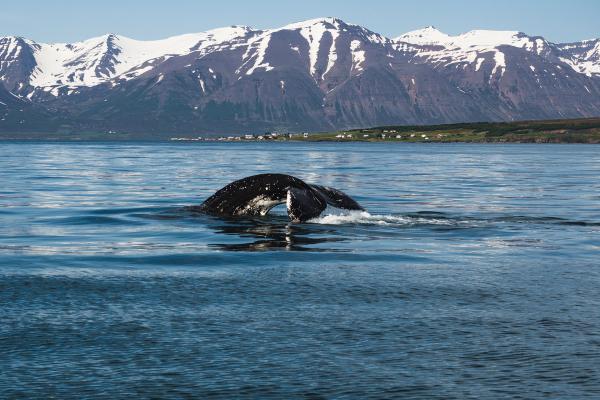
Hike Mount Súlur
The twin peaks of Mount Súlur (1,210 m) dominate the skyline southwest of town. The hike is moderate but long (4–6 hours round-trip), with a well-marked trail that leads through meadows and rocky ridges. On clear days, the summit rewards you with panoramas over Eyjafjörður and far into North Iceland.
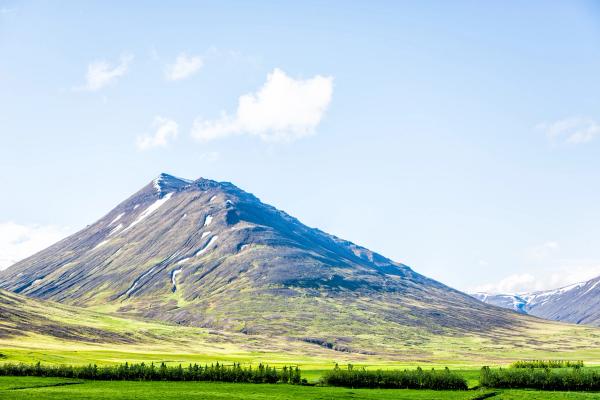
Christmas House (Jólahúsið)
For a dose of festive cheer any time of year, the Christmas House just south of Akureyri is worth a stop. Inside is a shop brimming with ornaments and Icelandic holiday treats, while the garden has quirky Santa sculptures. It’s especially atmospheric in winter but open year-round – a good spot to pick up some unique Christmas decorations.
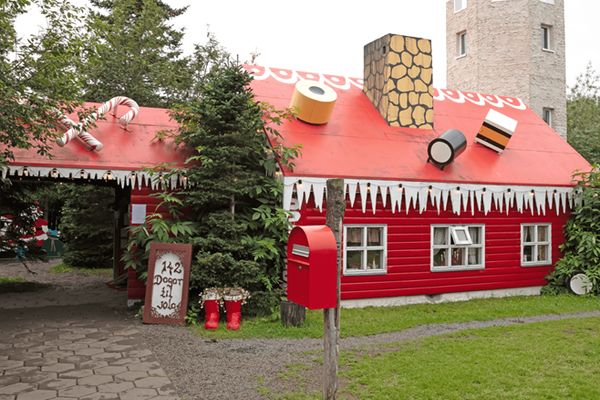
Winter Sports
Ski Hlíðarfjall
Just 10 minutes from downtown, Hlíðarfjall is one of Iceland’s best ski resorts, with varied slopes, reliable snow, and spectacular fjord views. The season usually runs from early December into spring, depending on conditions.
Beer Spa (Bjórböðin), Árskógssandur
A 30-minute drive north brings you to one of Iceland’s quirkiest experiences: soaking in tubs filled with warm beer and live yeast, said to soften skin and relax muscles. After your soak, head to the outdoor hot tubs overlooking Eyjafjörður – with a pint in hand, of course.
Eating & Drinking in Akureyri
Despite its small size, Akureyri is a genuine food town. You’ll find cozy cafés with excellent coffee, restaurants that showcase local lamb and seafood, and even a growing craft beer scene. Prices are lower than in Reykjavik, and there’s enough variety to keep you well-fed for several days on the road.
What to Expect
The food scene here leans local and seasonal. Expect Arctic char from Eyjafjörður, Icelandic lamb in hearty stews, and plenty of fresh-baked breads and pastries. International flavors are well represented too, from sushi to curries. Lunch deals and soup-and-salad buffets are common, making dining affordable by Icelandic standards.
Where to Try It
- North Restaurant – Located inside Hotel Akureyri, this elegant dining room is run by acclaimed Icelandic chef Gunnar Karl Gíslason (of Michelin-starred Dill in Reykjavík). Expect refined Nordic cuisine built around seasonal, local ingredients – one of the town’s standout spots for a memorable meal.
- Rub23 – A long-standing favorite in the Akureyri dining scene. Fusion cuisine that mixes sushi with Icelandic seafood and lamb; good for a special night out.
- Bautinn – A local institution in a historic building, known for its soup-and-salad buffet and family-friendly menu.
- Strikið – Rooftop restaurant with sweeping fjord views and an eclectic menu of international dishes.
- Kaffi Ilmur – Housed in one of the oldest buildings in town, this café is famous for its cakes and relaxed vibe.
- Greifinn – Casual and popular with locals, serving burgers, pizzas, and generous portions.
- Brynja Ice Cream – An Akureyri classic, serving soft-serve from the same spot for decades.
Coffee & Cakes
Coffee culture is alive and well in Akureyri. Try Bláa Kannan, with its distinctive blue house and warm interior, or Kaffi Ilmur for its terrace views. The downtown bakery Kristjánsbakarí is a great stop before a hike or a day on the road.
Bars & Nightlife
Akureyri’s nightlife is smaller than Reykjavik’s, but it still gets lively on weekends. Bars cluster along Hafnarstræti, where you’ll find local craft beer on tap, casual pubs, and the occasional DJ night. For beer, R5 Micro Bar is a solid spot to sample Icelandic brews, while Ölstofa Akureyrar and the Einstök Beer Lounge are both cozy, no-frills atmospheres with good beer.
For cocktail,s try Götubarinn, and wine lovers will find their home in Eyja. For live music, check the schedule at Græni hatturinn, the city’s long-standing grungy venue. In summer, long daylight hours mean terraces stay busy late into the night.
Day Trips from Akureyri
Akureyri makes an ideal base for exploring North Iceland. Within an hour or two, you can reach some of the country’s most dramatic waterfalls, volcanic landscapes, and sleepy fishing villages. Whether you’ve got your own vehicle for flexibility or are booking day tours, here are the top excursions from Akureyri.
The Diamond Circle
One of Iceland’s classic sightseeing routes, the Diamond Circle loops east from Akureyri through landscapes of lava, waterfalls, and wetlands. Each of these destinations make for a worthy day trip in their own rite, but stitching a few together for a day’s outing is also possible.
- Goðafoss: Just 30 minutes from town, this “Waterfall of the Gods” is a stunning horseshoe-shaped cascade right off the Ring Road. It’s especially impressive at sunset or under winter aurora.
- Lake Mývatn & Nature Baths: A volcanic wonderland with pseudo craters, mud pots, and steaming vents. After exploring, soak in the Mývatn Nature Baths, often called the north’s answer to the Blue Lagoon.
- Ásbyrgi Canyon: A horseshoe-shaped gorge filled with birch trees and hiking trails. Legend says it was formed by a horse’s hoofprint.
- Dettifoss: One of Europe’s most powerful waterfalls, roaring through a rugged canyon. Access roads close in winter – always check conditions before setting out.
Húsavík
Iceland’s capital of whale watching is only an hour away from Akureyri, and a great day trip destination if you’d prefer to do a whale watching tour from the most famous place for it in Iceland. Afterwards, there are a handful of great restaurants for a meal, and the nearby GeoSea geothermal sea baths offer incredible views out over the ocean.
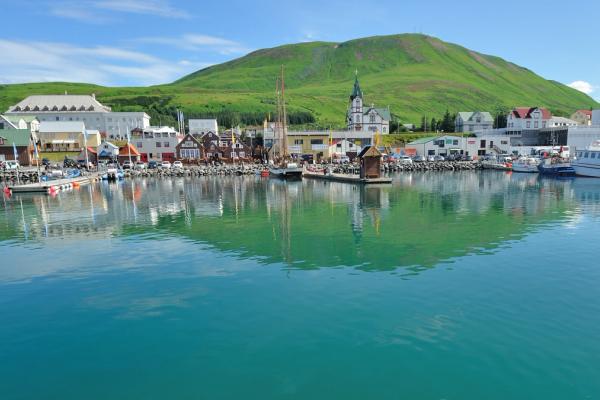
Lake Mývatn
While also listed as a part of the Diamond Circle, Lake Mývatn is also loaded with plenty of things to see and do over a whole day from Akureyri.
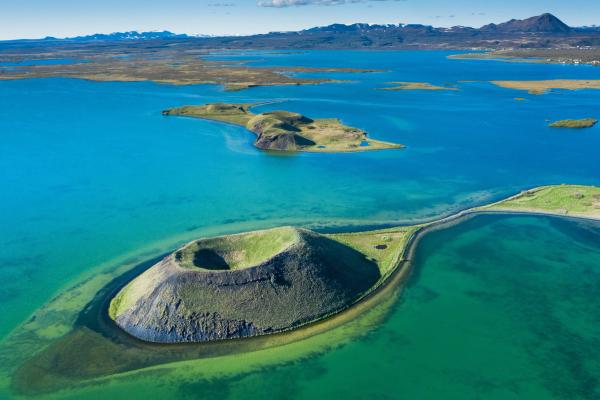
The Tröllaskagi Peninsula
Northwest of Akureyri, the Tröllaskagi (“Troll Peninsula”) is a land of steep mountains, winding coastal roads, and fishing towns.
- Dalvík: A charming harbor town known for whale watching and small-scale skiing. In August, it hosts the annual Great Fish Day, a free seafood festival.
- Siglufjörður: Once the herring capital of the world, now home to the award-winning Herring Era Museum and colorful harbor front.
- Heliskiing & Backcountry: For winter adventurers, this is the only place in Iceland where you can try heliskiing, dropping into untouched slopes with fjord views.
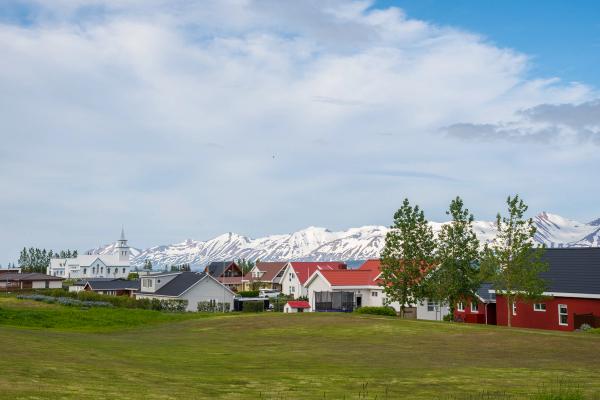
Islands of Eyjafjörður
Two small islands lie in Akureyri’s fjord, each worth a visit if you have time.
- Hrísey: Reached by ferry from Árskógssandur (30 minutes north of Akureyri), this peaceful island is known for birdlife, walking trails, and a slow pace of life. A nice little place that 95% of tourists won’t visit.
- Grímsey: The only part of Iceland that crosses the Arctic Circle. A ferry from Dalvík takes you to puffin cliffs and the famous Arctic Circle marker, you can join a day tour, or do it yourself with a domestic flight from Akureyri’s airport.
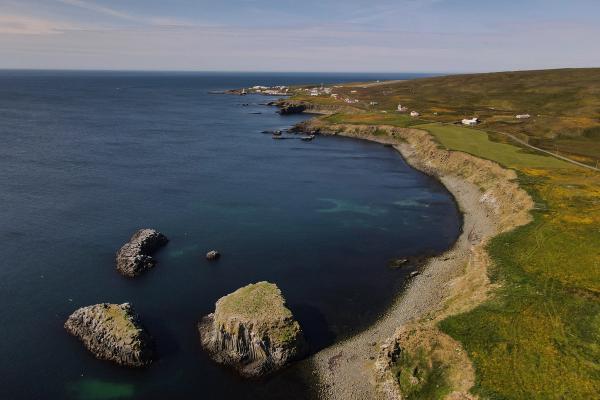
Into the Highlands: Askja & Víti (Summer Only)
For serious adventure, head into the Central Highlands to see the Askja caldera and Víti crater. This stark volcanic landscape was used by Apollo astronauts to train for moon missions. Tours run from Akureyri in summer, or you can drive yourself with a high-clearance 4x4 campervan. Expect a very long day – over 10 hours of rough-road driving – but unforgettable scenery.
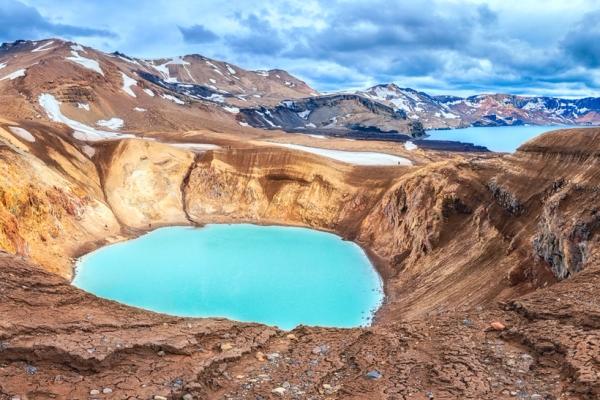
A Short History of Akureyri
Akureyri’s story begins in the early settlement era, when Vikings established farms along Eyjafjörður’s fertile shores. The name comes from akur-eyri, meaning “field sandbank,” a reference to the flat land by the fjord that made farming possible in an otherwise mountainous region.
By the 17th century, Danish traders were using the harbor as a seasonal outpost. In 1778, Akureyri was granted its first municipal charter, but permanent settlement remained small until the 19th century, when fishing and shipping began to thrive. The town’s ice-free harbor was its biggest asset – it meant year-round access to markets when many northern ports were blocked by sea ice.
Through the 19th and 20th centuries, Akureyri developed as North Iceland’s commercial and cultural hub. It became a center for education, with schools and cultural institutions that still draw students from across the region today. Modern Akureyri keeps that balance between a working harbor town and a lively cultural base, with its concert hall, museums, and festivals complementing a strong fishing and tourism economy.
Today, with just over 20,000 residents, Akureyri is Iceland’s second city – but it still feels like a cozy, walkable town surrounded by nature. Its history is visible in the colorful timber houses of the Old Town, the museums that celebrate its seafaring and aviation past, and the vibrant cultural life that has earned it the title “Capital of the North.”
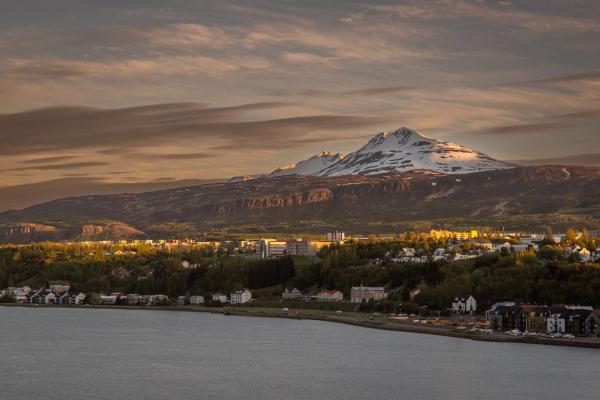
Akureyri: Capital of North Iceland
Akureyri distills North Iceland into a walkable, welcoming base: fjord-front streets, mountain trails above town, reliable whale watching in summer, steaming pools in winter, and day trips that deliver the region’s most dramatic landscapes. Whether you’re passing through on the Ring Road or parking up for a few nights, it’s an easy place to slow down and enjoy the north – one hot pool, hike, and harbor stroll at a time.

